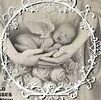There are two main types of baby clothing: winter and summer. Winter requires extra-warm outerwear. In warmer climates, a winter coat and warm pants are enough. In colder climates, you’ll need full-body outerwear, either a bunting sack or a stroller bunting. Babies do not need shoes yet, but booties are a good choice for extra warmth. Summer temperatures require a little more warmth from baby’s clothes. A bodysuit or little cap keeps baby’s legs warm and can keep them covered, but not overdressing.
Choose infant clothing according to the child’s height and weight. Choose one size up from their age. For example, a six-month-old can wear 9-12 month clothes. Avoid purchasing clothing that’s too small or too big. Babies often outgrow newborn clothes too quickly, so it’s important to purchase only what your child is currently wearing. This way, you’ll save money and prevent waste. Baby clothes can also be used for years to come.
Before dressing your newborn, make sure they’re on a softer surface, and put a nappy on them in case of a wee. Once they’re comfortable, stretch the neckline of a singlet. Be sure that the front of the singlet doesn’t touch the baby’s face, as this can irritate a newborn. Gently pull the arm holes of the singlet over the head and arms to avoid scratching their delicate skin.
While buying infant clothing, keep in mind that sizes may vary. Choosing the right size for your child’s age and weight is crucial. When shopping online, you can use the packaging to compare sizes from different brands and make sure that you are getting the right size for your baby. When buying maternity clothing, try to choose one that can grow with your child. Always keep the original packaging of the clothing until the child actually wears it. It will help you easily return items if they don’t fit.
In addition to purchasing clothing for your baby, consider the types of hand-me-downs. While you can’t be expected to make laundry every day, you’ll still want a few extra outfits in case your baby spits up a lot or has a messy diaper. And, don’t get too many items because babies outgrow clothes more quickly. There are also many other things to consider when buying baby clothes.
Consider a variety of styles. One-pieces and outfit sets are great staples of your baby’s wardrobe for the first few months. You can mix and match pieces of clothing to make it more comfortable for your baby. Baby clothes made with the softest organic cotton will make your baby look adorable in any situation. It’s also very easy to combine and match colors, so there’s no need to purchase the same outfit twice. For extra versatility, you can buy matching bibs to keep your baby looking cute.
When choosing baby clothes, remember to consider temperature. A winter romper is perfect for chilly weather, while a summer sleeveless onesie is perfect for the warmer months. Baby clothes should be functional, comfortable, and convenient. Western countries typically wear babygrows and bodysuits. Bodysuits and footies can be used as underwear, and many are decorated with cute, child-friendly images. Mini-tuxes are also available for formal occasions.
